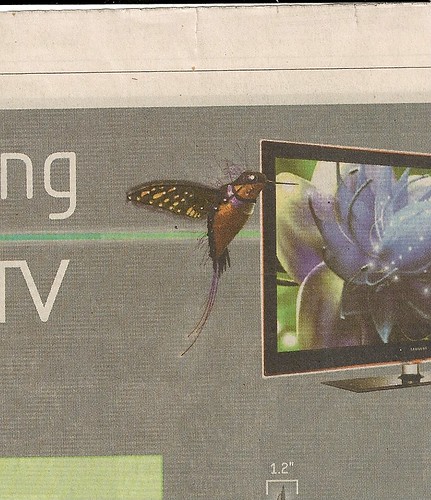Since mankind first became aware of their existence, the hummingbird has been the source of much inspiration to poets and naturalists alike. My favorite reference came from the pen of the America poetess Ednah Proctor Clarke in her verse titled “Humming-Bird” where she described one as a “Jewelled coryphee / With quivering wings like shielding gauze outspread.” Most anyone who has ever seen one taking nectar from the flowers in a springtime garden can readily attest to the effectiveness of this description, as could they also to the sheer ability of these smallest of living birds to stop a person in their tracks and cause them to gape in rapt admiration of so beautiful and sublime a creature. Whether one believes Darwin’s theory of evolution or the Adamic story in the Book of Genesis to be responsible for their appearance, it is difficult to dispute that they are most certainly among the most visually astonishing creatures with whom we share this planet.
Which is why I cannot understand what in the name of Alfred Russell Wallace’s magnifying glass could have caused anyone to think they could improve on one by substituting the wings of a butterfly for its own natural ones and using the resulting image in an advertisement for high definition television sets:

When I saw this little computer-assisted mutation gracing the advertisements in this past Sunday’s newspaper I nearly sprayed my breakfasting family with a mouthful of tea. There are, depending upon which taxonomy you choose to follow, approximately 340 species contained in the dozens of Genera that comprise the Family Trochilidae. Am I to believe that not one of them, not any one of the amazing species commonly described as hummingbirds, from the Marvelous Spatuletail to the Peacock Coquette, was deemed sufficiently attractive to satisfy the commercial communication requirements of the electronics retailer responsible for this odd avian – insect hybrid creation?
In truth, I actually pity the artist who produced this image. For who among us, having ever seen a living hummingbird gracefully flitting through an array of languidly open blossoms on a warm evening could ever privately think “you know, if I was designing that bird, I’d change its…” Even hubris at its most brazen is incapable of such a impulse; only lack of first-hand experience could possibly account for such a decision.

May 12, 2009 @ 04:32
I guess you haven’t seen the TV spot for this… it’s fully animated!
Nature Blog Network » I and the Bird #100: The NBN Award for Outstanding Achievement in the Field of Excellence
May 14, 2009 @ 03:04
[…] takes home the I Spy Award for his charming and brutal takedown of an illadviced advertisement in Hubris or Ignorance? Neither is particularly encouraging for the ad agency, however, who gets no award from us this […]
May 17, 2009 @ 16:43
I whole-heartedly agree with you John. Thanks to Patrick, I did watch the TV ad but the bird looks goofy in the ad. An animated version of a real hummer would have been much more memorable and more exciting!